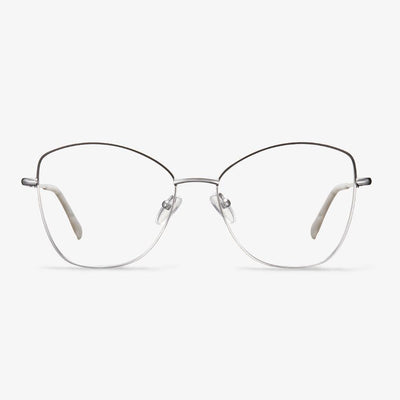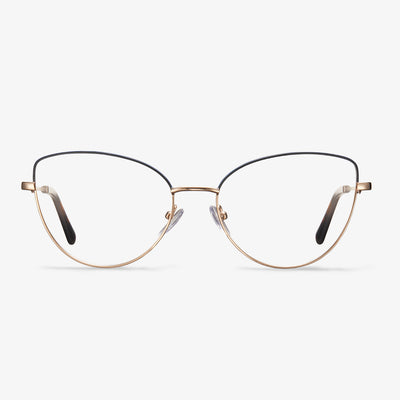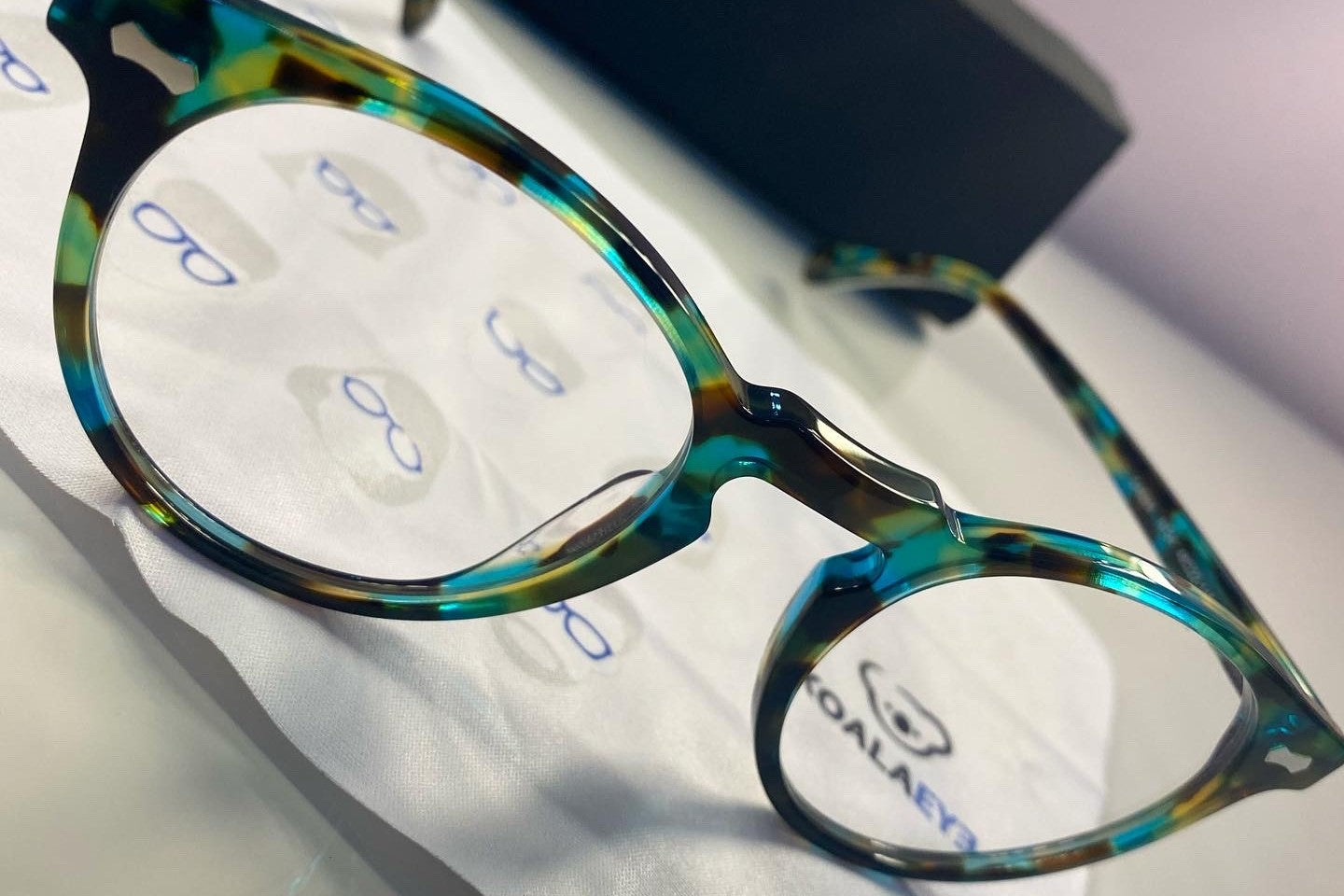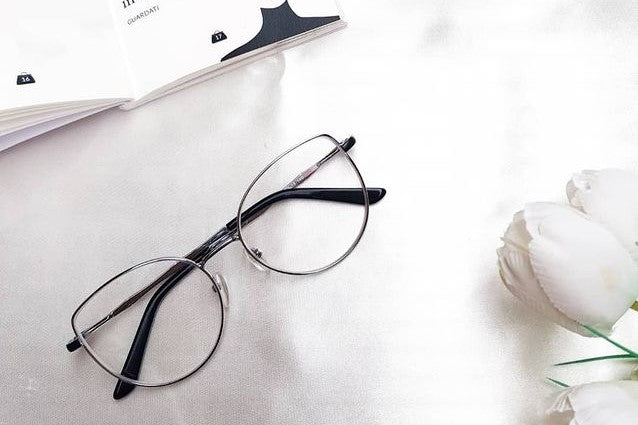There are many types of bifocals.
According to the manufacturing means, bifocals can be divided into separate bifocals, gluing bifocals, fusion bifocals, E-type bifocals, or one-line bifocals. The separation one is a simple type of bifocal lens. Two lenses of different strength were used to make it be in the center of the distal and proximal vision areas.
The TR90 Spectacle Frame
TR90 frame is a kind of polymer material spectacle frame with memory, no chemical residue is released, and it meets European requirements for food-grade materials. It is currently an internationally popular ultra-light spectacle frame. TR90 frames have the characteristics of super toughness, impact resistance and abrasion resistance, and low friction coefficient, which can effectively prevent damage to the eyes and face caused by the breakage and friction of the frame during sports. Because of its specific molecular structure, it has good chemical resistance, is not easy to deform in high temperature environment, can withstand high temperature of 350 degrees in a short time, and is not easy to melt and burn. Moreover, the TR90 spectacle frame has a lubricating surface with a density of 1.14-1.15. It will float when placed in salt water. It is lighter than other plastic spectacle frames. It is about half the weight of the sheet frame and 85% of the nylon material. It can reduce the burden on the bridge of the nose and ears.
What kind of light is blue light?
Blue light is light of a certain wavelength. In the sunlight, including red light, orange light, yellow light, green light, blue light, indigo light, and purple light, blue light occupies a place. The wavelength of blue light is less than that of red light but greater than purple light. The energy intensity is also different, and the blue light is relatively less strong than red light. People must rely on the 'macula' to perceive light. The macula is a 'pearl' hidden in the fundus and the most important photosensitive part of the fundus. The macula can look at objects, generate electrical signals, and transmit the signals to the brain so that people can see the things in front of them clearly. Strong light shines directly on the eyes, and it is likely to cause damage to the macular structure at once.
How to choose blue light blocking glasses?
While trying it on, look at the electronic screen from a distance to see if it stimulates your eyes. Holding the glasses in front of a display screen or under an LED light to see if they reflect blue light on the surface of the lens. It shows that blue-blocking glasses can block blue light. The special blue light flashlight shines on the white cardboard through the lens, the blue light that passes through the blue-blocking lens is noticeably dimmed, while the blue light that passes through the normal lens is not changed at all, which is what the blocking blue light does. You can go to a professional eyeglass shop to detect instruments through the spectrum of professional authority, and the best blue light blocking rate is between 60%-70%.
Characteristics of titanium frames
Titanium is widely used in the eyewear industry because it is not easy to deform, fade and has strong stability. The glasses frame made of titanium can highlight the noble taste and elegant temperament. The glasses frame made of titanium can be divided into pure titanium, titanium alloy, and beta-titanium frame three kinds. To learn about titanium frames, how to identify pure titanium frames?
Titanium frame has the benefits of low density, high strength, good mechanical properties, and strong corrosion resistance. The frame is very light and not easily corroded by moisture. However, due to the poor process performance of titanium alloy, machining is very difficult, the glasses frame made of hydrogen, oxygen, nitrogen, carbon, and other chemical impurities are more absorbed. The wear resistance of titanium alloy is relatively poor, and the production process is relatively complex, so the cost is relatively high and the workmanship is relatively complicated when using this material to make the spectacle frame. The price is much more expensive than the common spectacle frame.
What Are Progressive Lenses?
Progressive lenses also called multifocal lenses, have three prescriptions in one pair of glasses, which allows you to see near, middle-distance, and far objects without changing your glasses.
The traditional glasses have telltale lines in the lenses, while the progressive lenses are an update on bifocal and trifocal lenses. Progressive lenses have a seamless look. Sometimes, they are called no-line bifocals. The more accurate name is no-line trifocals.
Progressive lenses are typically designed for people over 40 years old who are both nearsighted and farsighted. With the progressive lenses, there is no need for you to change the nearsightedness eyeglasses and the farsightedness eyeglasses constantly.
How to Remove Scratches from Prescription Glasses with Coating
It would be an unfortunate thing if there is a scratch on your prescription glasses. Some people may ask how to remove scratches from prescription glasses with coating. Unluckily, there is no magic cure to remove scratches from prescription glasses. Once your glasses are scratched, they are scratched.
However, there are some products on the market designed to make the scratches look less visible. In fact, most of these products are just waxy substances that wear off easily and they even can smear anti-reflective lenses.
So, if your glasses are scratched, for optimum vision and safety, you had better replace your lenses if they become scratched. When purchasing the glasses, you can go to the local optical store or choose online. For example, the Koalaeye Optical is a good choice because it is cheap and has free shipping. You can find some professional explanations on this website, such as Sphere, Cylinder, or Axis.











































